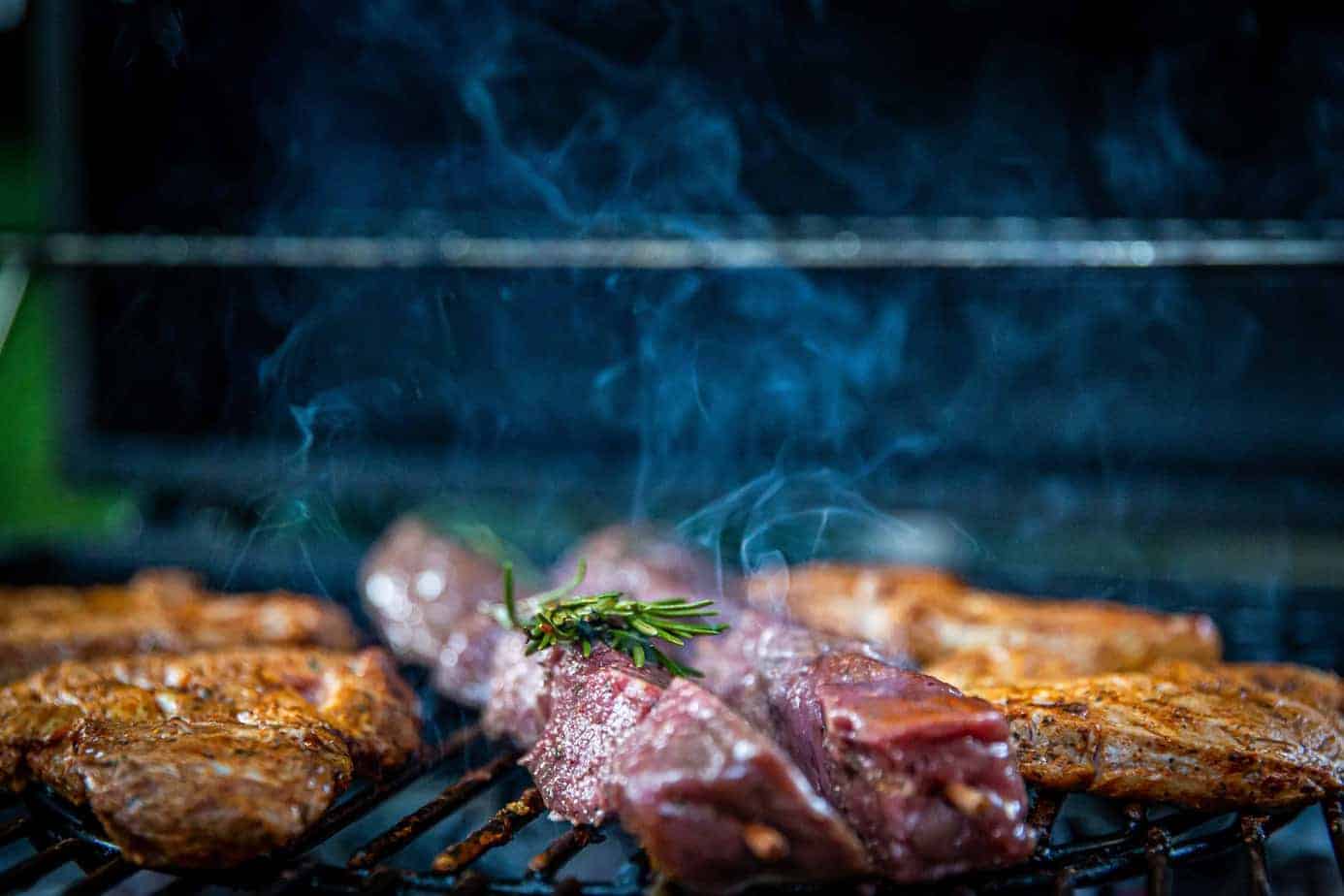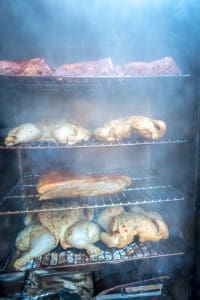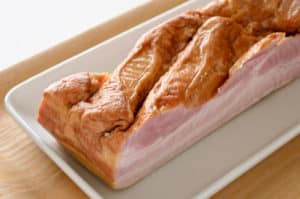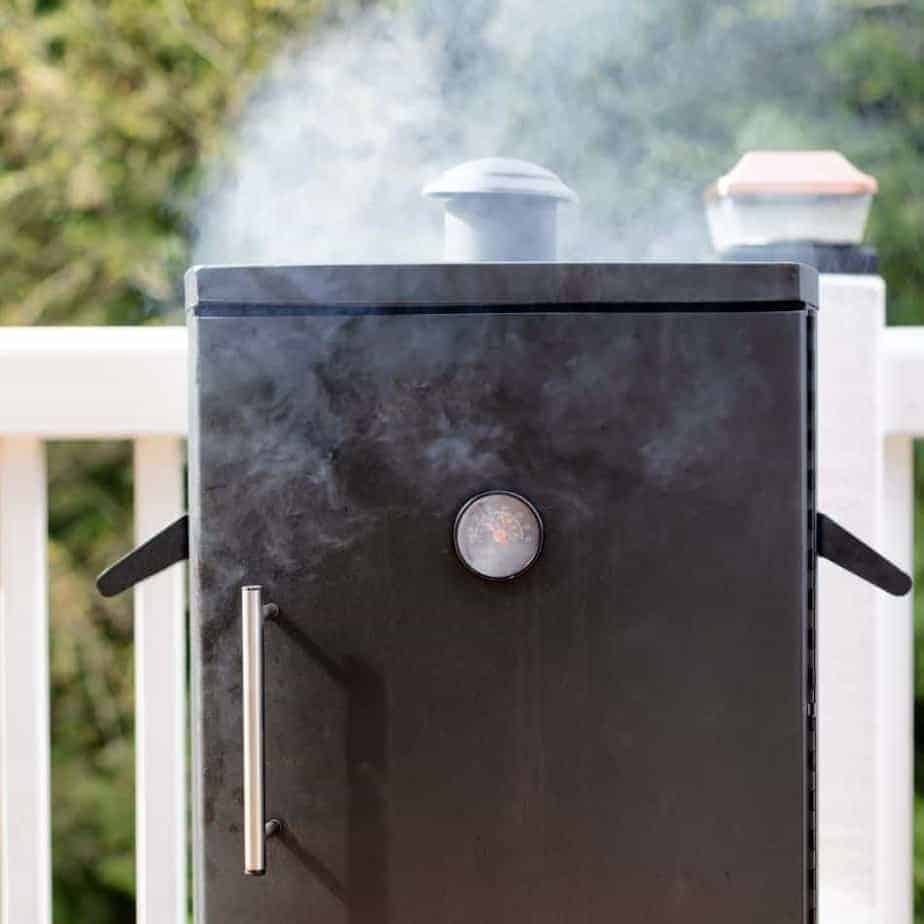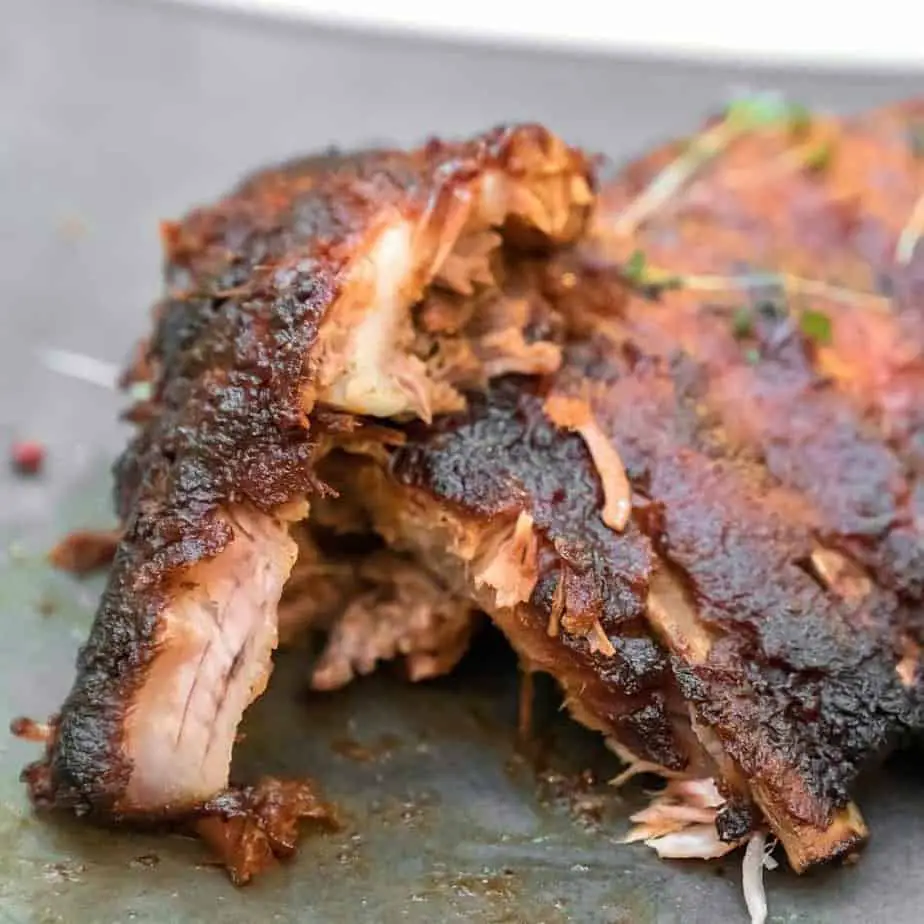This is Why Your Smoked Meat Turns Black (with fixes)
Disclosure: This post may contain affiliate links. If you use these links to buy something we may earn a commission at not additional cost to you. Learn more.
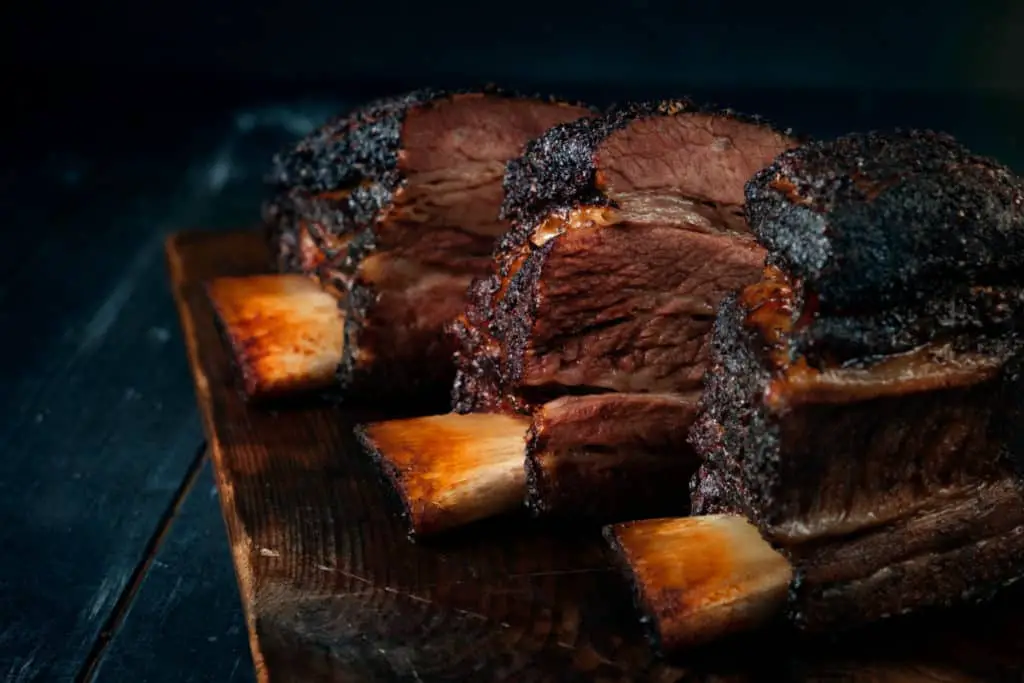
Smoking is a generally reliable way to cook delicious foods with general ease. However, sometimes the food comes out of a smoker with a bitter black covering. This is called creosote.
Creosote is why smoked meats turn black. Creosote is a byproduct of wood smoke and is an indicator that a smoker needs to be cleaned and reseasoned. Creosote is easily cleaned and can be prevented with minor changes in smoker care.
So if your smoked meats are continually black and bitter, let’s talk about it. We’ll discuss why creosote is such a problem and easy solutions to prevent it.
The Creosote Problem
Creosote is mostly tar and a combination of a few other components. It is created when plant matter is burned and carried into the air as small particles via smoke. It condenses and forms globs on any surface it touches. This is why your food turns black and tastes bitter. Since it namely tar, creosote is toxic, and the bitter taste is a sort of “warning”, telling our bodies not to eat it.
Because creosote is so sticky it as it collects the globs appear to be growing. The bigger the glob the faster it grows. This is because the surface area collects more creosote faster. How does this affect your food though?
If a smoker has a creosote problem then the taste is likely to transfer to the meat. This is why it is imperative to have a clean smoker. As bad as creosote is though, it’s not actually the root of the problem. No, creosote is more of a symptom of a problem. An easy problem to fix too.
The problem here (and the solution) is the wood itself. Creosote isn’t released with the smoke if the fire creating the smoke is a full-on flame. The wood needs to burn. If it smolders then there will be thick, billowy smoke high in creosote. The thinner the smoke the less creosote. To prevent a smolder follow these instructions:
- Make sure that your vent is at least 3/4 the way open
- There is no moisture in the smoker before you put your meat in (let the smoker heat up to get rid of the moisture)
- Make sure the chimney is open and clean
- Don’t put any sugar-based flavors in at high temperatures
- Don’t put too much wood in the firebox at once
- Don’t use wet pellets/wood
- Don’t use green wood
- Wrap your meats in foil
If you follow these instructions you shouldn’t have any trouble with more creosote. You might still need to clean your smoker to get rid of any leftover creosote.
Cleaning Methods
There are a number of cleaning options. Creosote’s sticky nature can make it a big pain to clean though. So we’ll talk about the options in order from easiest to hardest.
The easiest way to clean creosote is to burn it off. Before you start this though, you should not do this if you are worried about the paint on your smoker. It may mess up your paint. You will need a propane torch and a stiff brush. You can use a wire brush, but that may cause scratching.
- Start by opening the smoker up and letting it air out for a minute
- Turn on your torch
- Burn the creosote (As you burn it, the creosote will bubble up and become brittle instead of sticky)
- Make sure you burn the lid, walls, and grates to get all of the creosote
- After the creosote has all bubbled up scrap it off
- Burn a clean fire to get reseason the smoker
Doing this will effectively get all the creosote off without any grief. You need to be careful around your sensors though. If you get them too hot you could damage them. I’ve included a video that covers this method. It’s only a few minutes long with some good information in it.
With that in mind, you can try out other ways too. A simple putty knife or scraper will do the job. Scrape off the thick sections and vacuum them out. This works well, it can get a little gunky though. This is much safer for the paint and sensors though.
Another option is to use a cleaner. Solvents work very well if you use them often. Getting behind will cause you some grief, but it’s doable.
As you clean the creosote off, make sure that you are gentle with the sensors. They can be kind of fragile.
Types Of Smoke
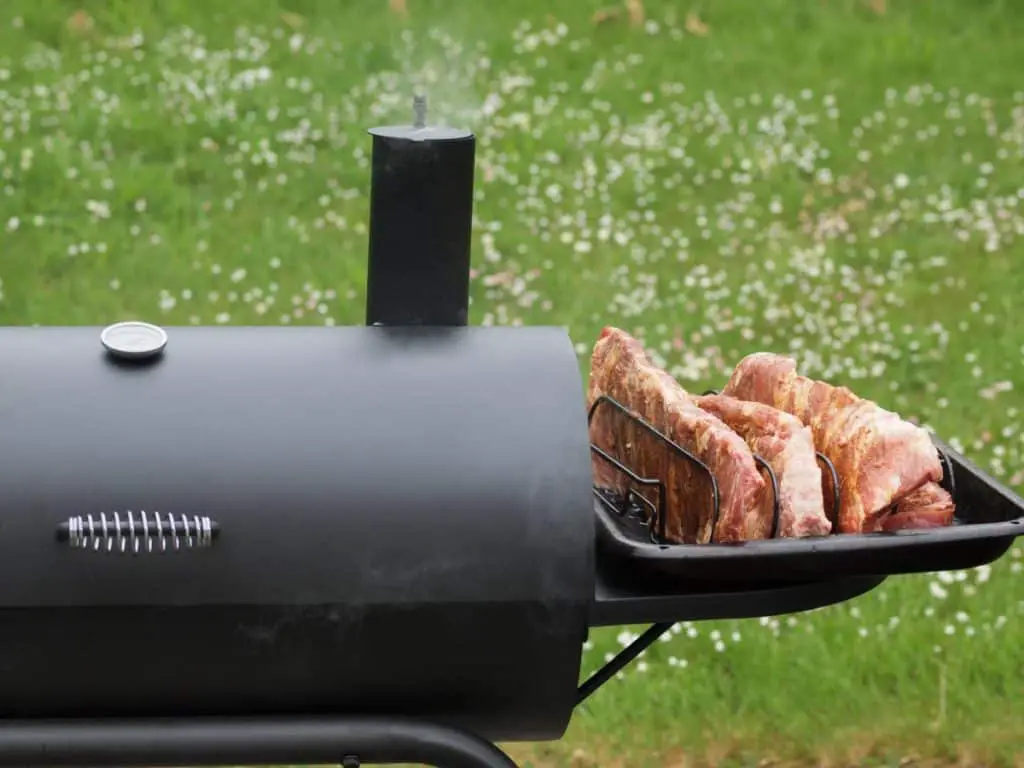
There are two types of smoke. Thick billowy gross smoke that gets creosote on your food. Ruining your smoked meats. This tastes awfully bitter and gives your food a thick black crust. The is called blue smoke. This gives your food a wonderful flavor and does not give off a lot of creosote. This is the kind of smoke you want.
We already talked about how to prevent the build-up of creosote on your smoked meats. A lot of those things will apply to how to get the coveted blue smoke.
Blue smoke will be the biggest fix you apply to your creosote problem. To get this blue smoke you have to make sure that the fire has proper ventilation. Proper ventilation is the biggest first step to proper fire management. The problem you need to be aware of here is wind. If there is a lot of wind you might need to change the position of your smoker so that the vent is pointed away from the wind.
The second biggest thing you need to do for this blue smoke is to not use too much wood. Too much will cause smolder, which will give you thick billow smoke.
Keep the temperature low too. Too hot will not give the flames enough time to burn all the fuel, creating thick smoke. A small hot fire is great, but if it gets too big, it can become a problem.
If you are using wood keep the chunks about the size of your palm. Smaller than a grapefruit, but bigger than clementines.
Doing all of these will prevent your meats from turning black. Creosote turns meats black, and to keep creosote down proper airflow, fuel, and cleanliness need to be maintained.



